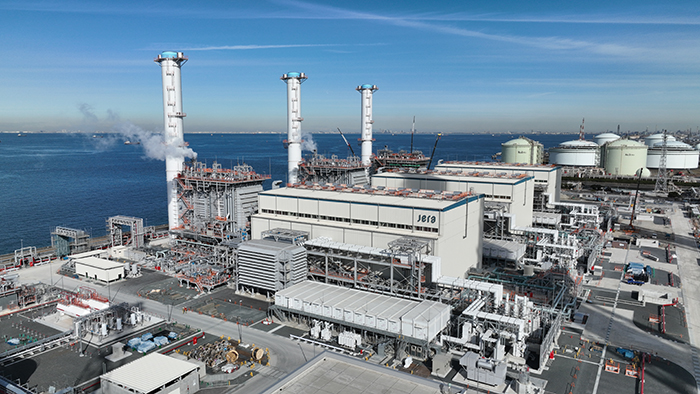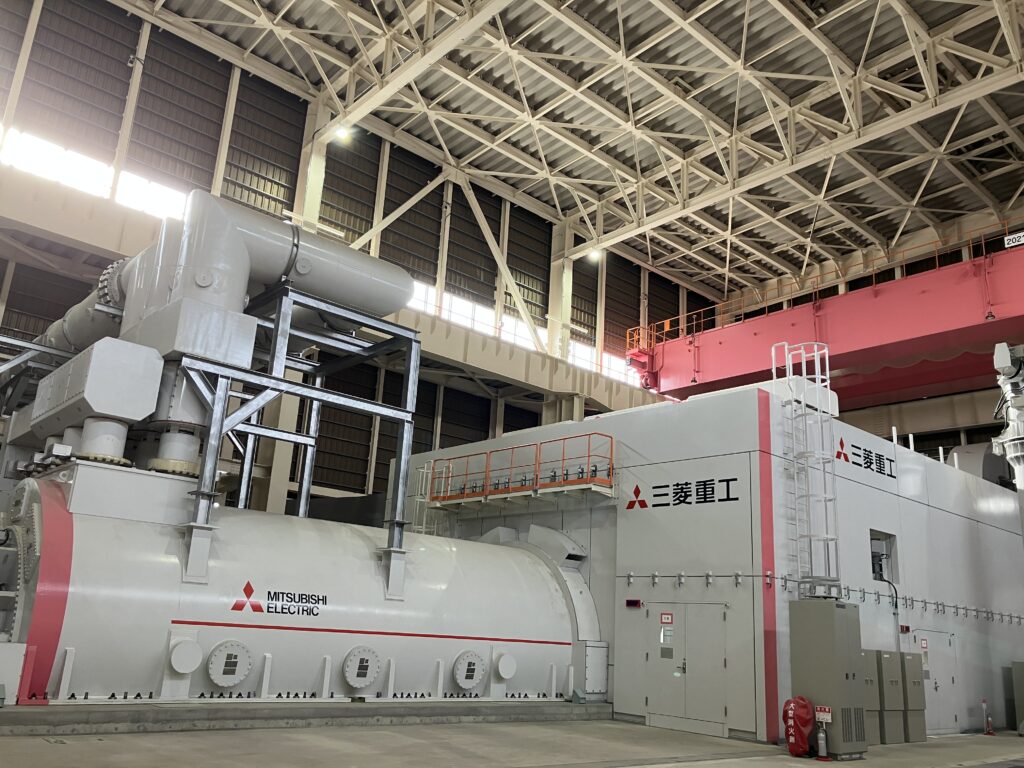First LNG-Fired CCGT Unit Begins Operation at JERA’s Giant Modernized Gas Plant in Japan

Japanese power generator JERA has launched commercial operation of the first of three liquefied natural gas (LNG)–fueled 650-MW combined cycle gas turbine (CCGT) units that will modernize the Anegasaki Thermal Power Station, a mammoth 3.2-GW, six-unit gas and oil power plant in Chiba Prefecture.
The new Anegasaki Thermal Power Station Unit 1, opened on Feb. 1, replaces a 1967-built 600-MW gas steam unit that consumed heavy oil, crude oil, and LNG. JERA is now working to replace two similar units built between 1969 and 1972 at the Anegasaki plant. It plans to open the modernized 650-MW Unit 2 in April 2023 and Unit 3 in August 2023.
JERA, however, plans to also continue operations at Unit 5 and 6, 600-MW gas steam units built in 1977 and 1979, but which were closed in April 2021 and slated to be permanently shuttered this year. In October 2022, the company resumed operations at Anegasaki 5 and prepared to bring Unit 6 out of shutdown to address looming power shortages in Japan this winter.
High-Efficiency Gas Turbines
JERA kicked off its project to replace Anegasaki Units 1 to 3 in 2016 in a bid to improve their thermal efficiencies. In 2020, it signed a full turnkey contract with Mitsubishi Power for three 650-MW M701JAC gas turbines. The gas turbines provide an upgrade that will “enhance efficiency to save energy and reduce the environmental load,” said Mitsubishi Power.
The company noted that the JAC gas turbines used for the Anegasaki Units 1 to 3 project are equipped with 1,650C class forced air-cooled combustor systems. “Air emitted from the combustor casing is cooled in an external cooler, and the pressure boosted in a forced air-cooled compressor, after which the air is used to cool the combustor, and returned to the casing,” Mitsubishi Power explained.
“This process optimizes the cooling structure. The system also utilizes advanced turbine blade cooling technologies such as an extra thick film thermal insulation coating, and high pressure compressors. This allows for shorter start-up times compared to steam cooling methods, and improves operational efficiency,” it said.

A Program to Modernize 6.7 GW of Fossil Capacity
Anegasaki Units 1 to 3—a combined 1.95 GW of replacement capacity—are part of a larger 6.7-GW thermal power plant replacement project that JERA is spearheading through fiscal year 2024. According to JERA, a joint venture between Tokyo Electric Power Company Holdings Inc. and Chubu Electric Power Co., the replacement work will contribute to a “stable electricity supply.”
As part of its replacement program, JERA in August 2022 completed the conversion of the 1-GW Taketoyo Thermal Power Station Unit 5 to ultrasupercritical technology, enabling co-firing of coal with woody biomass. In June 2023, it will open the modernized 650-MW Yokosuka Unit 1, an ultrasupercritical coal unit in Kanagawa Prefecture. A twin replacement unit, the 650-MW Yokosuka Unit 2, is scheduled to be completed in February 2024.
Along with the Anegasaki units, JERA also plans to replace three units at the Goi Thermal Power Station in Chiba Prefecture between August 2024 and March 2025. The Goi units will be replaced with 780-MW LNG-fired GE 9HA.02 gas turbines for a combined capacity of 2,340 MW.
JERA, notably, has recently ramped up its capacity-building efforts in light of Japan’s emerging energy crisis. Security of the country’s power supplies has been compounded by the slow startup of its nuclear power plants, which were shut down after the March 2011 Fukushima disaster, as well as retirements of aging thermal plants for environmental reasons. So far, only 10 of Japan’s 33 reactors are operating. Another 17 have been cleared by the nation’s nuclear regulator.
The country is, meanwhile, suffering a surge in fuel prices, which stems from tight markets in the wake of Russia’s invasion of Ukraine. Gas power has become Japan’s dominant power resource since 2009, making up about 40% of its current generation mix. Industry observers suggest tight supplies in Tokyo and Nagoya will continue through this year.
Intensifying competition for LNG in the Asia Pacific region is a key factor. JERA, which handles about 40 million tons of LNG annually—among the largest transaction volumes in the world—has scrambled to procure stable supplies of LNG. In December, the company signed a key term sheet to purchase 800,000 tons of LNG per year from 2025 to 2035 with Oman Liquified Natural Gas.
—Sonal Patel is a POWER senior associate editor (@sonalcpatel, @POWERmagazine).
The post First LNG-Fired CCGT Unit Begins Operation at JERA’s Giant Modernized Gas Plant in Japan appeared first on POWER Magazine.